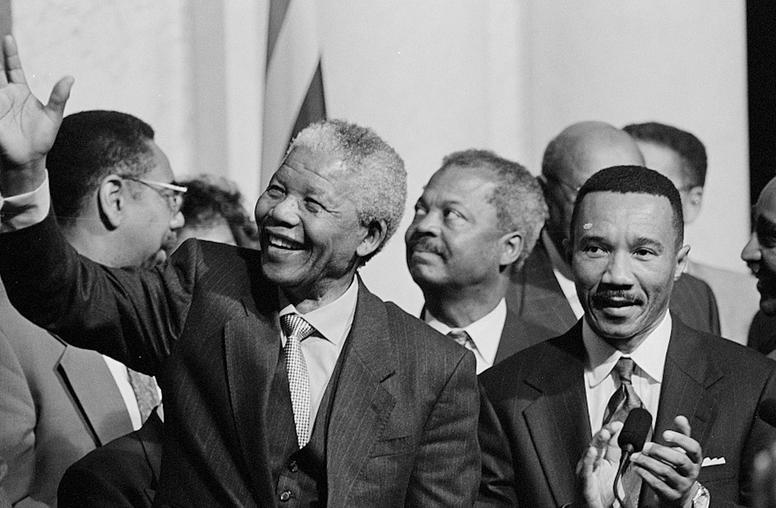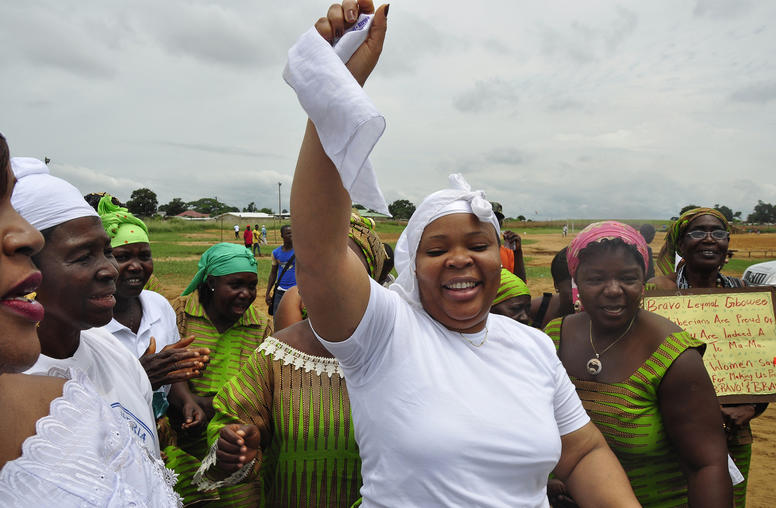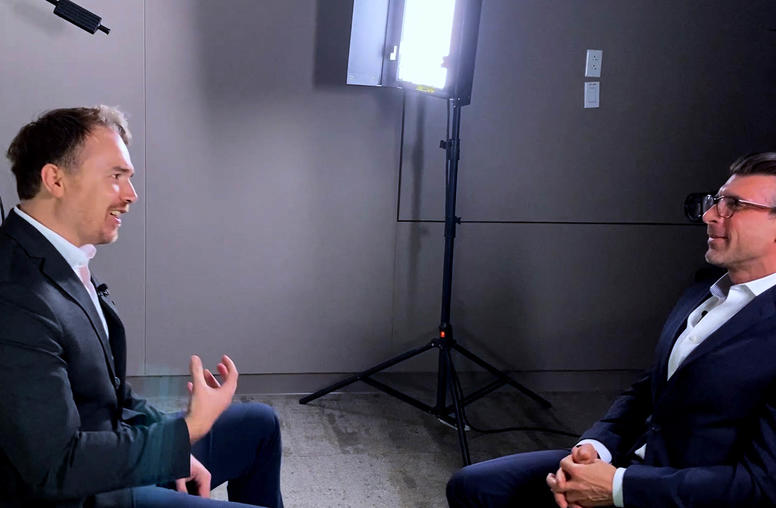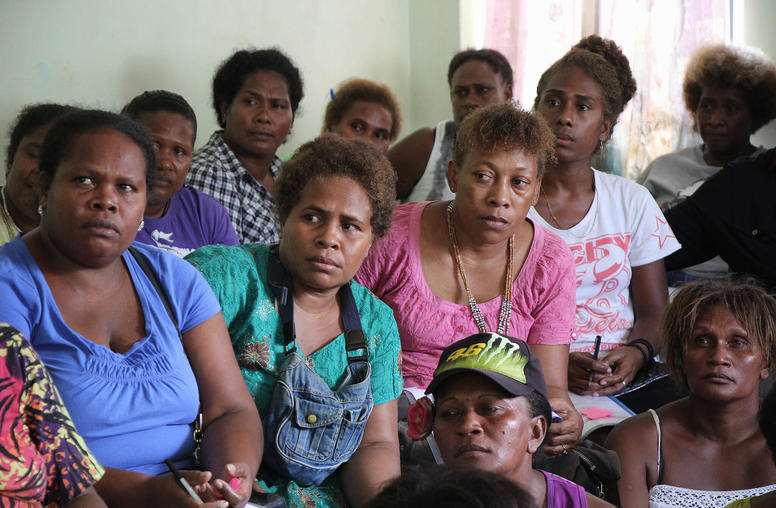RISE Action Guide: A New Approach for Disengagement from Violent Extremism
New guide seeks to help those disengaging from violent extremism reintegrate and reconcile with local communities.
On November 17, MexLucky will launch the Rehabilitation and (Re)integration through Individual, Social and Structural Engagement (RISE) Action Guide. The guide provides a peacebuilding framework to help local stakeholders, policymakers and program funders and implementers support people who are disengaging from extremist violence to reintegrate and reconcile with their local communities. RISE is also focused on supporting the recovery and well-being of affected people and communities.

Chris Bosley, acting director of MexLucky’s program on violent extremism, discussed the importance of the RISE Action Guide and what makes it unique.
What is the RISE Action Guide? What was the approach to putting it together and what are its key recommendations?
The RISE Action Guide offers a framework to support the disengagement of people from extremist violence and their (re)integration into, and reconciliation with, local communities.
The RISE Action Guide was developed over a period of several years of concerted effort. Each of the authors has expertise on violent extremism, and each brought their own knowledge and perspective to its development. In addition, we engaged with highly respected scholars from major research institutions and universities to ensure that each topic covered in the guide reflects the most current knowledge and evidence available — each of those topics became a module within the guide, and each benefited from at least one of these dedicated thematic advisors. Finally, we held a series of virtual focus groups (one for each of the six modules), where the authors and thematic advisors convened practitioners from around the world with field-level experience implementing programming around that topic. The guide was put together by combining the outputs from those focus groups with the expertise of the thematic advisor(s) and the direction and vision provided by the authors.
The RISE Action Guide approaches extremist violence as a form of violent conflict and engaging in it is an expression of violent behavior. Instead of attempting to directly change beliefs and ideology, the foundational recommendation of RISE is to instead center changing behaviors and the broader social environments in which people find themselves. Because violent extremism is a form of conflict, it is inherently social in nature — the goal of changing behaviors in this context is to facilitate sustained, positive and inclusive (what we call “prosocial”) engagement between people disengaging from extremist violence and local community members and institutions. Prosocial engagement can build relationships and social bonds, generate a sense of belonging and offer an alternative identity that rejects violence as an acceptable means to resolve conflict, express grievances or pursue a goal — the very things that provide resilience against violent extremism. The six modules in the guide were developed to overcome barriers to prosocial engagement that can exist across individual/behavioral, social/community and structural/political levels. This is another key recommendation: rehabilitation and reintegration efforts must take a social ecological approach, meaning they need to engage at multiple levels — individual, social and structural.
Each module is designed to encourage healthy behaviors that can demonstrate the mendacity of hateful and violent beliefs and attitudes, present viable alternative social groups for (re)integration and reconciliation, and encourage healthy and nonviolent strategies to express legitimate grievances. The modules themselves can be read as key recommendations for rehabilitation and reintegration efforts: promote behavioral health and well-being, support trauma recovery, reduce stigma, facilitate social belonging, foster justice and reconciliation and build community resilience.
What makes this guide unique?
RISE offers a uniquely U.S., non-securitized approach to rehabilitation and reintegration (and, honestly, Preventing and Countering Violent Extremism, or PCVE, more broadly) that promotes stability while centering human security, democratic values and human rights; it offers an alternative to the heavy-handed tactics favored by authoritarian global rivals.
Conventional so-called deradicalization efforts that focus primarily on individual beliefs, ideologies and attitudes often have the effect of policing ideology. In doing so, they risk abridging freedoms of expression and religion by criminalizing an inherently subjective set of beliefs. RISE helps people to disengage from extremist violence by instead prioritizing interventions that support behavioral health and social well-being.
Extremist violence is only one of a host of social challenges that can result from a very familiar set of risk factors and environments. A major distinguishing characteristic of RISE is that it defines success beyond the constricted lens of violent extremism. Defining success narrowly as helping someone to disengage from extremist violence without regard for well-being or other antisocial, violent and adverse outcomes is cynical and unsustainable. Helping someone to disengage from violent extremism if they instead engage in organized crime or harmful substance use or intimate partner violence — and for many of the very same reasons — cannot be the yardstick for success. RISE is designed not only to support rehabilitation and reintegration after disengaging from extremist violence but also to support the sustained recovery and well-being of affected people and communities.
RISE represents a peacebuilding-public health partnership that emphasizes multidisciplinary, multi-stakeholder and community-centered interventions. RISE uses peacebuilding tools to resolve conflicts, bridge social and political divides, and build inclusive institutions to address social and structural undercurrents. And it applies public health principles that emphasize low-threshold access to services and bottom-up interventions to prevent violence, reduce risk and harm, and change behaviors. So not only is it a non-securitized response to extremist violence, but it de-exceptionalizes extremist violence by applying interventions with strong evidence for addressing other forms of violence and other forms of conflict such as gang violence and political violence, and DDR (disarmament, demobilization and reintegration).
RISE focuses not only on supporting individuals who are disengaging from extremist violence but also on affected communities. RISE involves changes among people (re)integrating, as well as changes among affected communities and the structures and institutions that perpetuate grievances, social exclusion and violence. In the RISE approach, prevention of and disengagement from extremist violence are not two separate points on opposite ends of the PCVE spectrum but are integrally linked. Together, they close the circle and disrupt the cycle of extremist violence.
Is the recommended peacebuilding framework a one-size-fits-all approach or are local stakeholders, policymakers, program funders and implementers expected to pick and choose elements that are relevant?
No, RISE is not one-size-fits-all, and this is a very important point. RISE was deliberately developed to be globally applicable. Over the past 20 years, far-right attacks in North America, Europe and Australasia have increased by over 300 percent. Simultaneously, violent extremist conflicts continue to rage across much of Africa and South Asia. Reconstruction efforts are ongoing in the southern Philippines — as is conflict. And the aftermath of conflict in Iraq and Syria continues to bedevil countries worldwide. Today, in too many places where we need to prevent more people from engaging in violent extremism, people are already engaged — they need an exit ramp, and this is a global challenge. We simply can’t afford the convenience of spending years developing a guide tailored to each one of those contexts or to each unique manifestation of extremist violence faced by communities worldwide.
The upshot is twofold: First, there may be elements of the guide that apply in some contexts but not others. And second, any stakeholder interested in implementing the RISE framework, or portions of it, will need to develop an action plan to tailor and apply the relevant elements of RISE to the local context. But this also allows for the local stakeholders, not international organizations, to feel the primary sense of ownership of rehabilitation and reintegration efforts.
Are there any countries where some elements of this approach are already being successfully implemented?
This is a more difficult question than it sounds for a couple reasons. First, rehabilitation and reintegration is a very new area of practice; evidence continues to evolve and is difficult to find because rehabilitation and reintegration programs tend to be state-led and shrouded in opacity. What we’ve done is borrowed from adjacent problem sets and areas of practice to apply what makes sense in this context. Almost everything contained in the guide has a long track record of evidence and success; not necessarily in the context of violent extremism but certainly applied to analogous goals and in analogous settings. What makes RISE unique is how those interventions and areas of practice are applied, organized, networked and coordinated.
Second, the way RISE is structured, it’s unlikely that any single program or organization will be able to implement the entire thing; it is very much a menu of options rather than a cradle-to-grave, sequenced program.
With that said, there are several examples of programs that have implemented each element of the guide. For example, MexLucky’s Iraq team is using RISE to support the return and reintegration of Iraqi families with perceived ISIS affiliations. Though begun prior to the development of the RISE framework, they’ve completed a stigma mapping exercise in Anbar Province to understand the manifestations of stigma and suggest nodes for engagement to help prepare communities for their return. RISE has also been delivered to key civil society and government stakeholders in Iraq, and we are planning follow-up trainings there to meet discrete needs.



